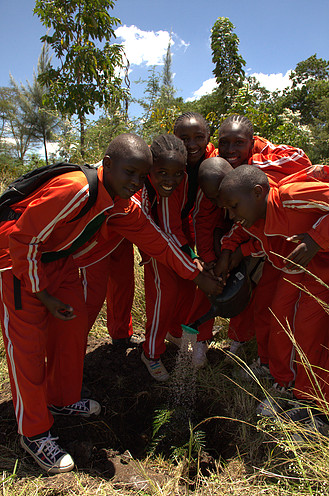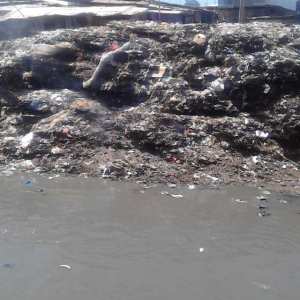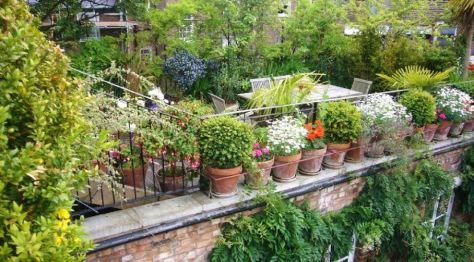Introduction
The term water hyacinth is an infamous term in Kenya, especially to those who live around the lake. Water hyacinth (Eichhornia crassipes) is an aquatic plant native to the Amazon basin. It is a free floating perennial plant with broad, thick, glossy, ovate leaves.
 The weed is believed to have been brought to Africa about a century ago. It has appeared as an ecological nuisance in many parts of Africa. It caused a crisis in South Africa in 1910s, Madagascar in 1920s, Tanzania, Uganda and Kenya in 1930s through 1970s. In the 1980s and ’90s, it bloomed heavily on lake Victoria, the Nile, the Congo and almost all watercourses of Africa (Aquarius Systems)
The weed is believed to have been brought to Africa about a century ago. It has appeared as an ecological nuisance in many parts of Africa. It caused a crisis in South Africa in 1910s, Madagascar in 1920s, Tanzania, Uganda and Kenya in 1930s through 1970s. In the 1980s and ’90s, it bloomed heavily on lake Victoria, the Nile, the Congo and almost all watercourses of Africa (Aquarius Systems)
Water hyacinth production and growth is very fast facilitated by nutrient(fertiliser washed to the water bodies and industrial effluents) channelled into the waters.
Effects
Water hyacinth generally reduces the water quality making it difficult for other aquatic organisms to survive, leading to reduced fish production. It blocks the fishing routes making fishing impossible and recreational activities.The weed is also jeopardizing the survival of flamingos in Lake Nakuru and Lake Elementaita.


The hyacinth also results into dying of native plant since sunlight cannot filter through to the bottom layers of water. It normally looks like an island in the lake or football pitch as shown below.
It also clogs irrigation canals and pipes used to draw water for towns and villages.
These problems are being experienced in the country hindering the lives and the livelihood of of many and putting the country’s economy at stake.
Previous efforts
Several trials have been directed towards eradication and management of the hyacinth but with no success to count on.
 These includes introduction of weevils in the late 1990s( James A. Ogwang, PhD), manual removal of the weed and purchasing of a machine harvester by LVEMP.
These includes introduction of weevils in the late 1990s( James A. Ogwang, PhD), manual removal of the weed and purchasing of a machine harvester by LVEMP.

These have not resulted into any significance outcome.
One of the communities in Kisumu, seme sub-county now purchase water from distance places after their small lake was infested by the weed(standard news paper, 18/01/2017).
A move by Kiuesa
Kenya Inter-University Environmental Students Association (KIUESA) is an association of Kenya university students who are pursuing environmental courses and those passionate about environmental issues. We aspire to be a world class Association that inspires advocacy and mainstreaming of environmental concerns in development and sustainability of the present and future global community, through creation of viable society towards environmental sustainability and instill a sense of responsibility and personal commitment for the environment by the students and tapping the challenges into opportunities.
Hence, KIUESA members decided to make a move to address this perennial tragedy. From the discussion conducted on 18-19/01/2017, the students suggested some possible ways on how the hyacinth can be sustainably managed. The resolutions include:
- Water hyacinth can be used to make mats, baskets and furniture from its fibrous nature.

Water hyacinth furniture (http://www.michaelburtonsr.com/?page_id=22) - Finding a biological value or chemical content of the weed to further find its possible uses.
- Making of bioethanol, which is reported to be lucrative, but only on large scale due to its fast growth rate.
- Paper making- The Mennonite Central Committee of Bangladesh has been experimenting with paper production from water hyacinth for some years. They have established two projects that make paper from water hyacinth stems. The water hyacinth fibre alone does not make a particularly good paper but when the fibre is blended with waste paper or jute the result is good. The pulp is dosed with bleaching powder, calcium carbonate and sodium carbonate before being heated.
- Biogas production – due to its fast growth, it can produce a reliable biogas for energy, hence reduction in deforestation.
- Analyse and assess the existing initiatives on the hyacinth and chip in, this is to avoid duplication of efforts.

Some of uses water hyacinth can be put into - Work with the county governments, national government and interested parties towards this initiative(https://www.linkedin.com/pulse/lets-save-lake-victoria-erick-khamala)
- Create more awareness on social media to bring this to attention of many.
- Water hyacinth can also be used to make charcoal briquettes

Green charcoal briquettes made from water hyacinth (http://www.michaelburtonsr.com/wp-content/uploads/2014/05/Green-charcoal-made-from-water-hyacinth1.jpg) - Form a task force to draw a plan, facilitate and spearhead the implementation of this initiative which is start immediately.
Conclusion
As students from various universities put their heads together, much can be done and we strongly believe that this can be solve permanently. Much funds have been pump into this, but to no avail. It therefore requires a proper thought strategy to manage this weed. KIUESA has the capacity to carry out this and turn Kenya into a green economy through management of water hyacinth. This is a problem which if solved, will contribute tremendously towards reduction of poverty and will boost our GDP through creation of permanent jobs due to its rapid growth rate. It will also contribute towards achievement of Kenya’s vision 2030 and UN SDGs. Kenya through KIUESA, can lead other African nations in the management of this weed. It’s our hope that we will be accorded support to make this a reality.
kiuesaoffice@gmail.com
KIUESA… Bringing sanity to nature
Written by Enocka Odongo
KIUESA
Chairperson, 2017











































